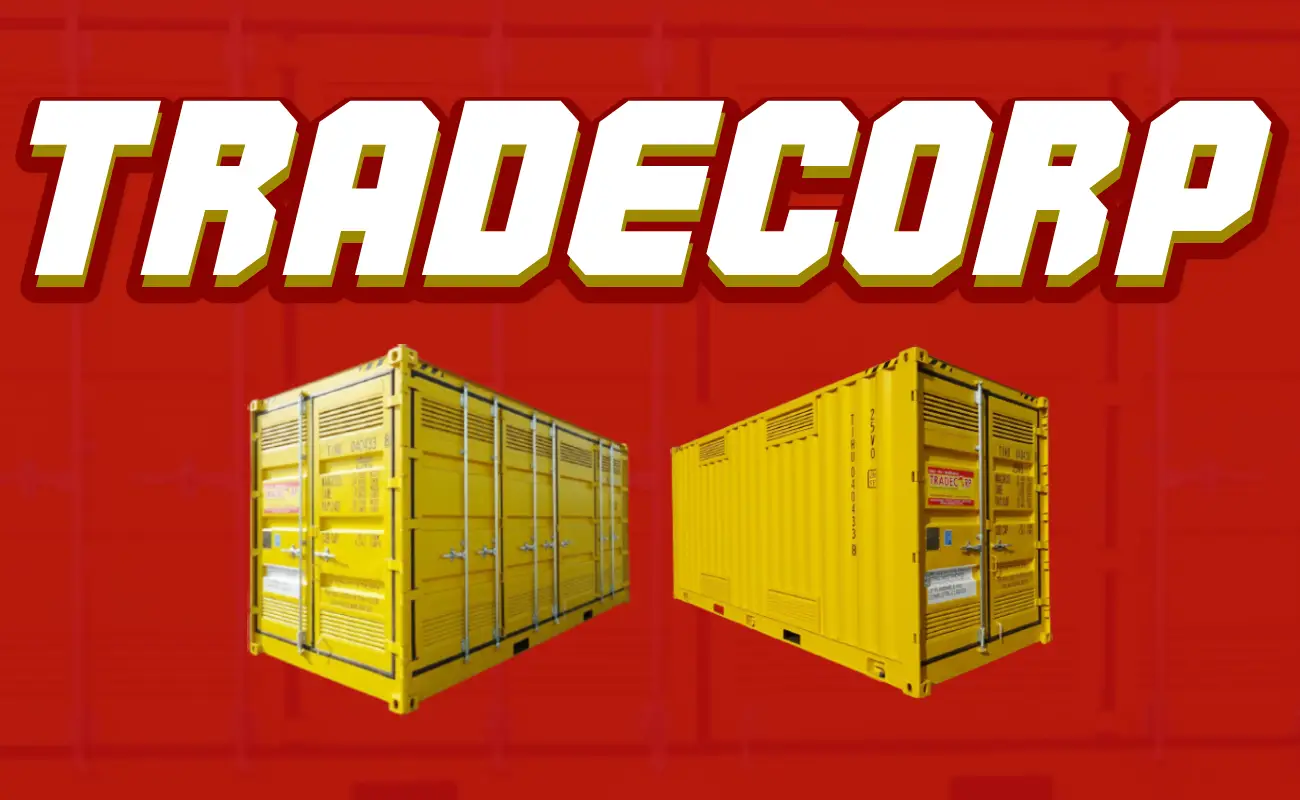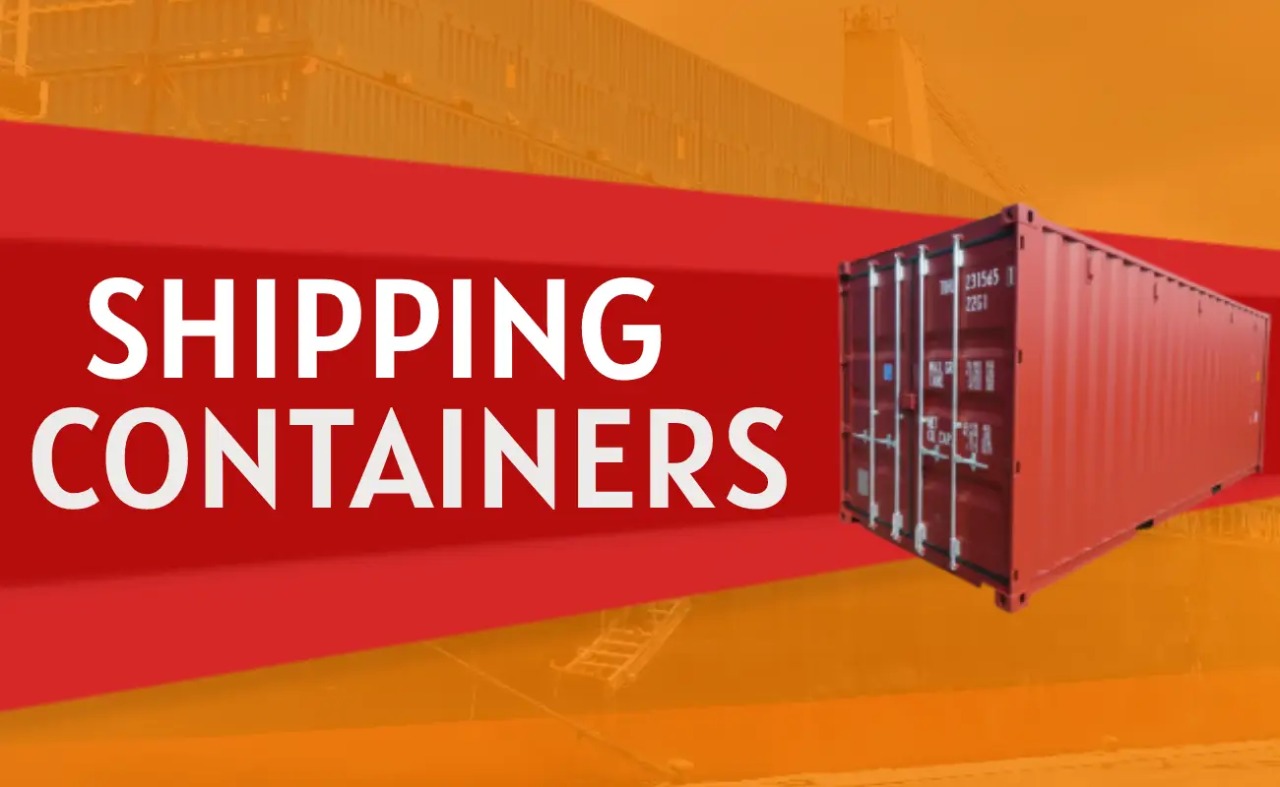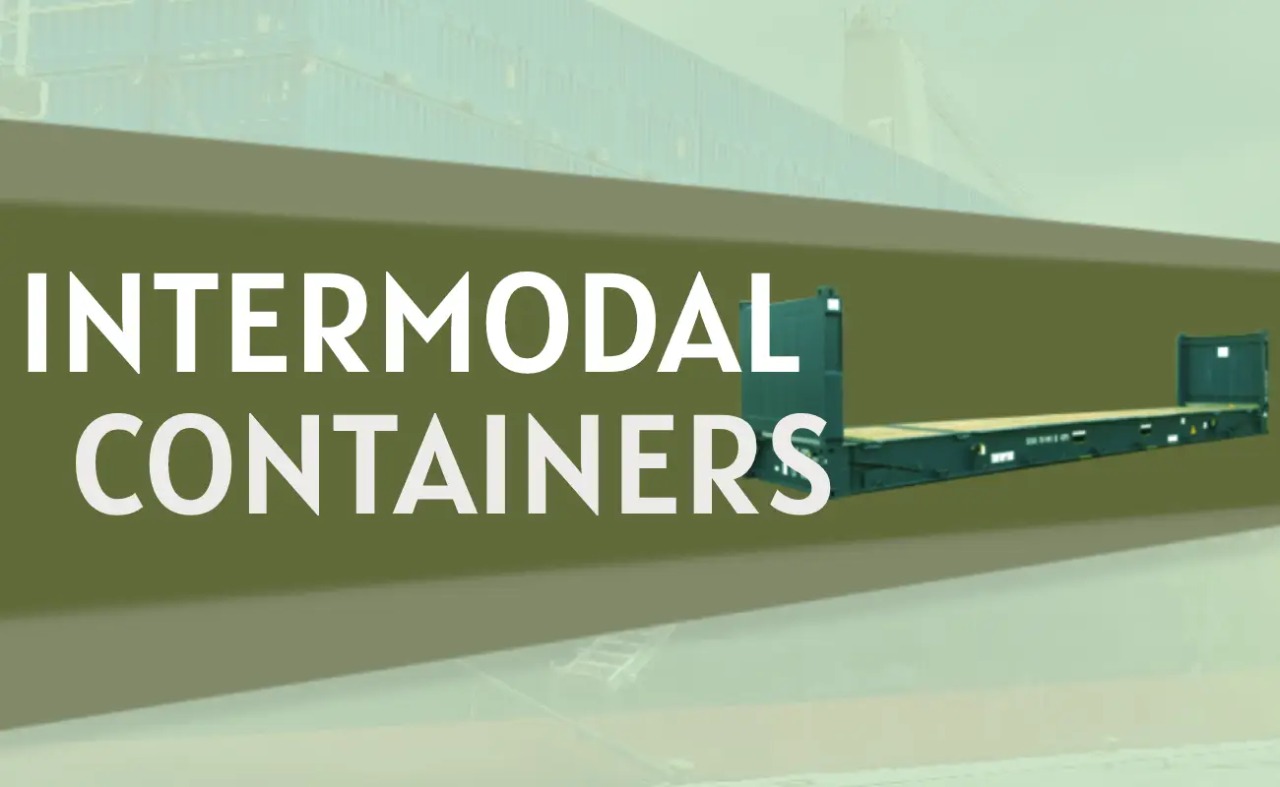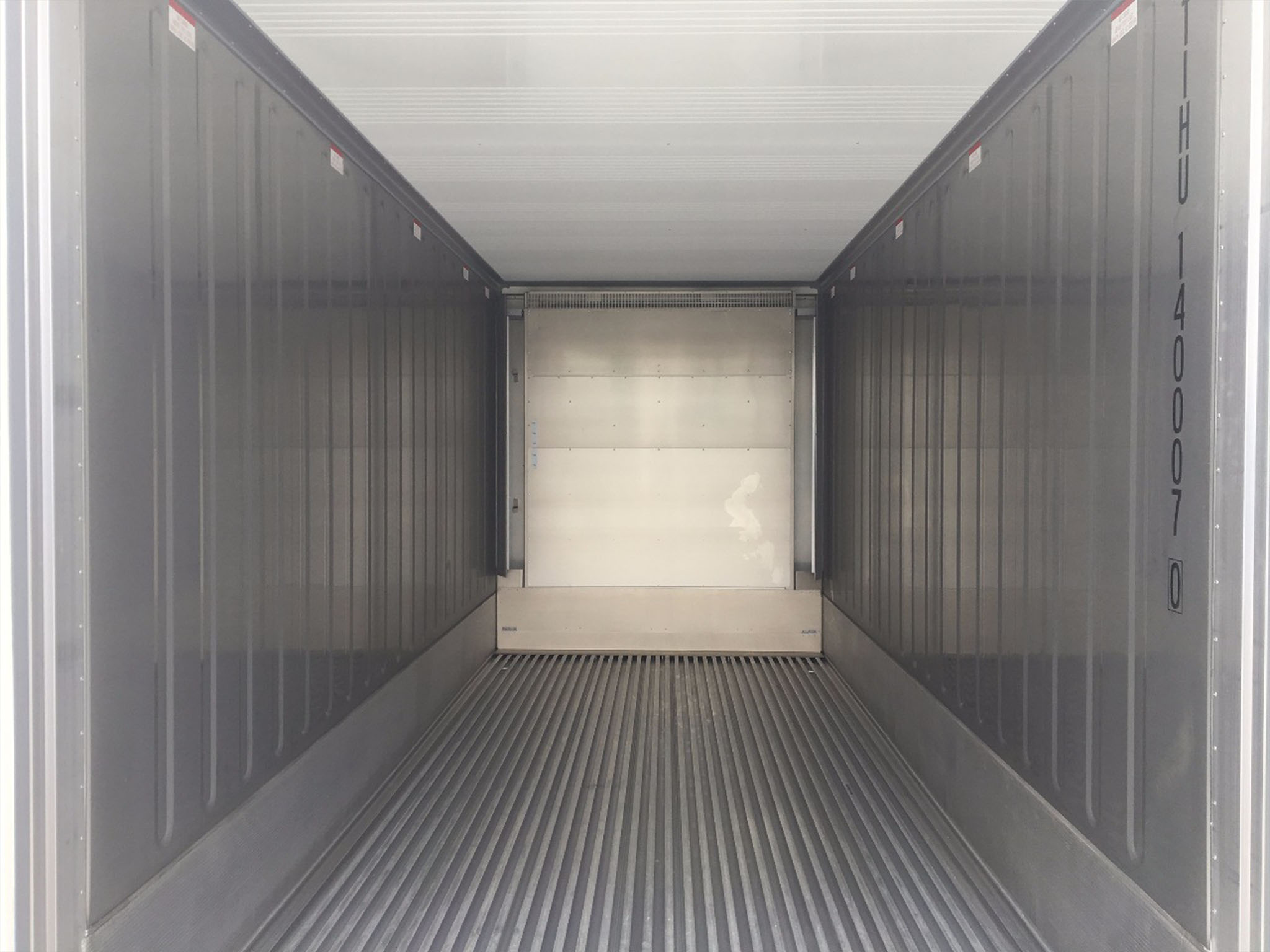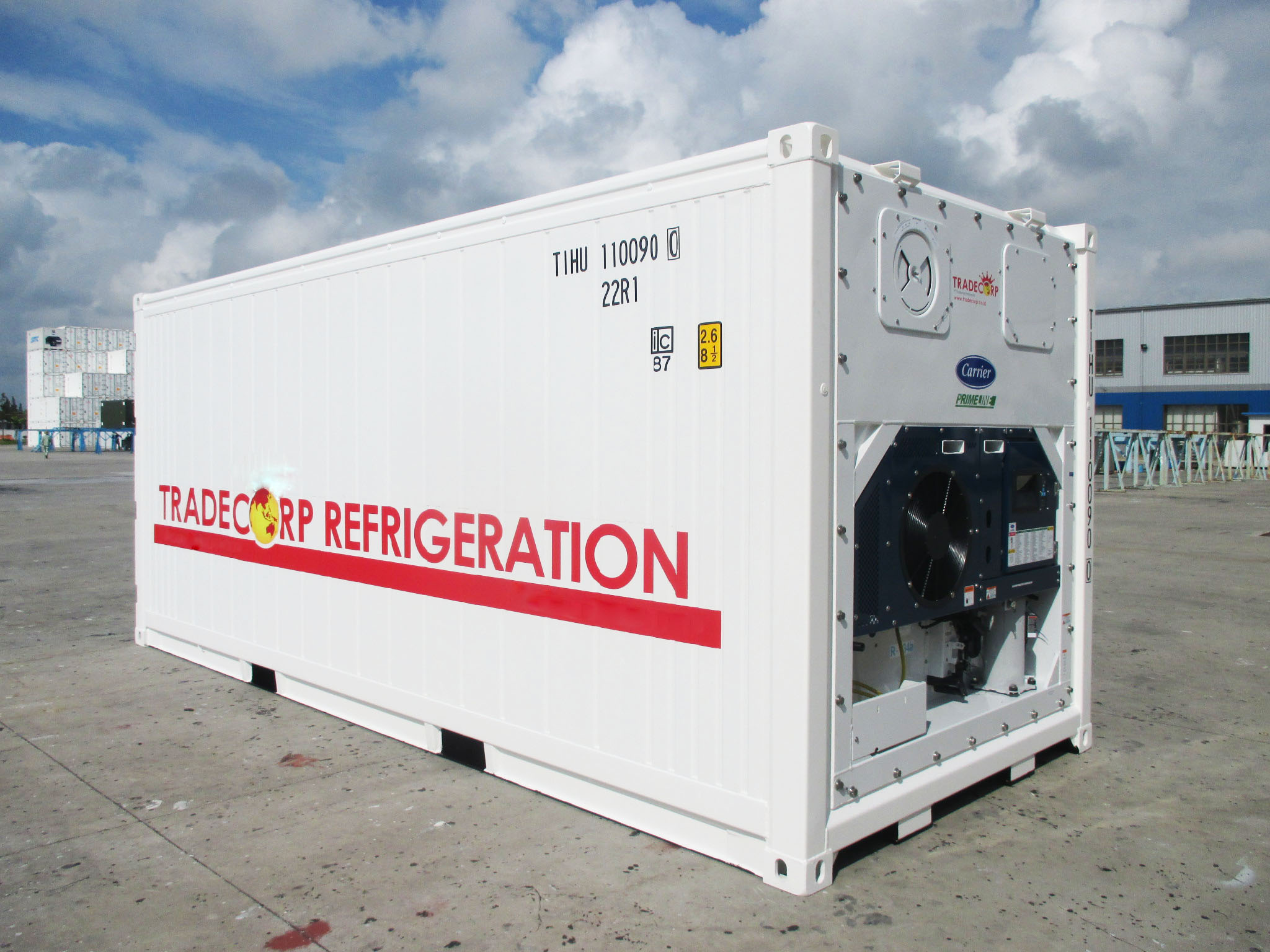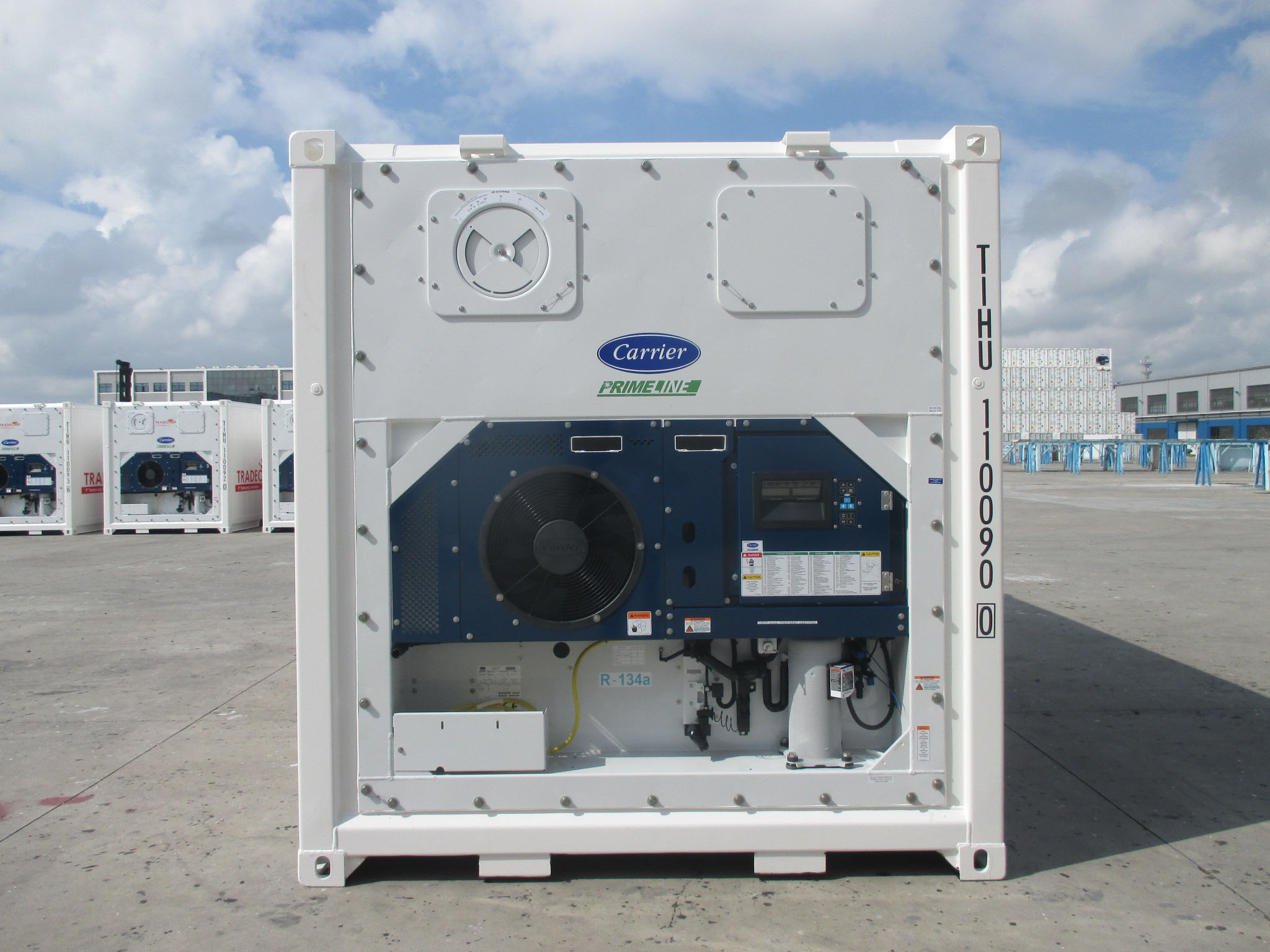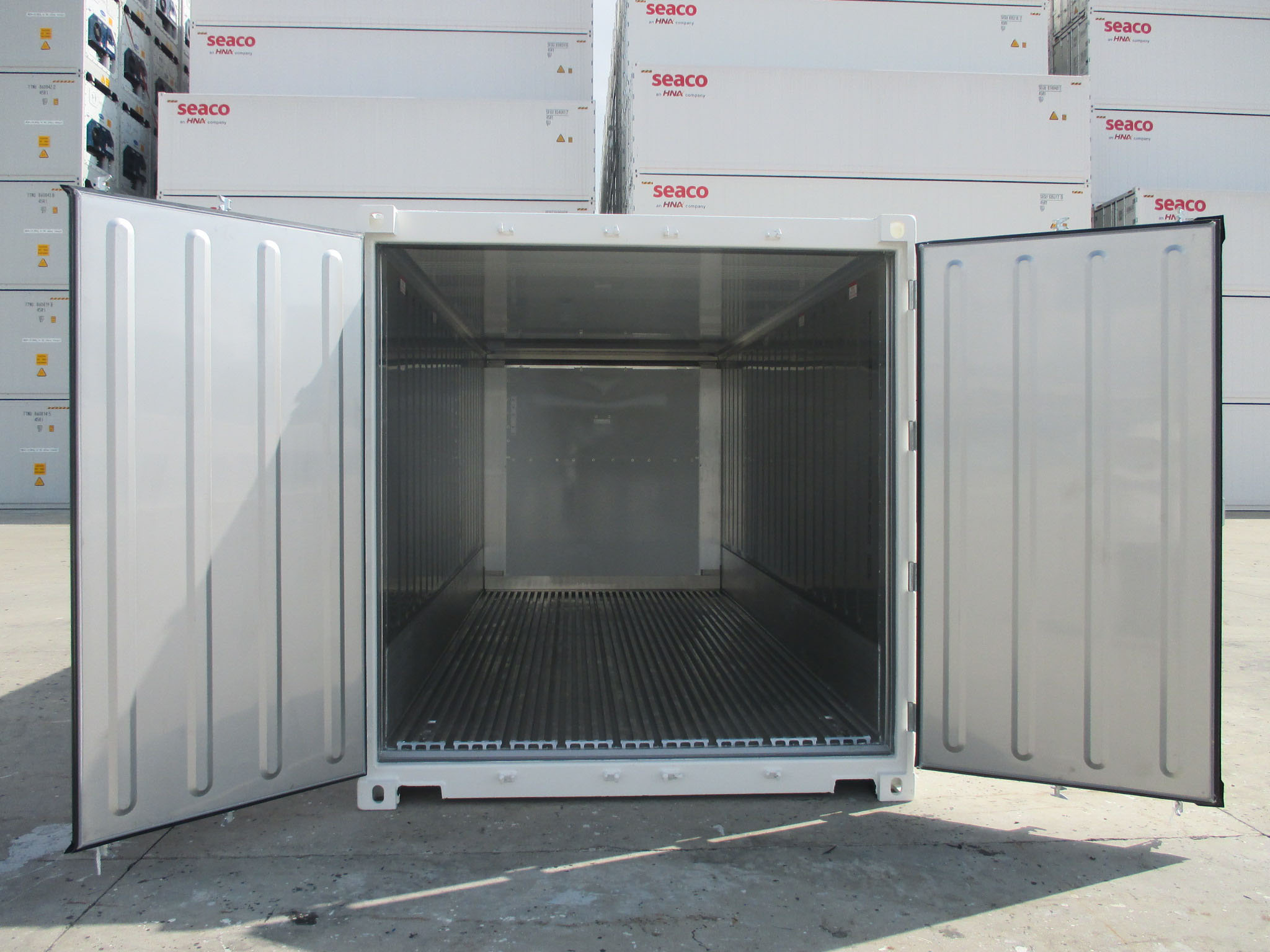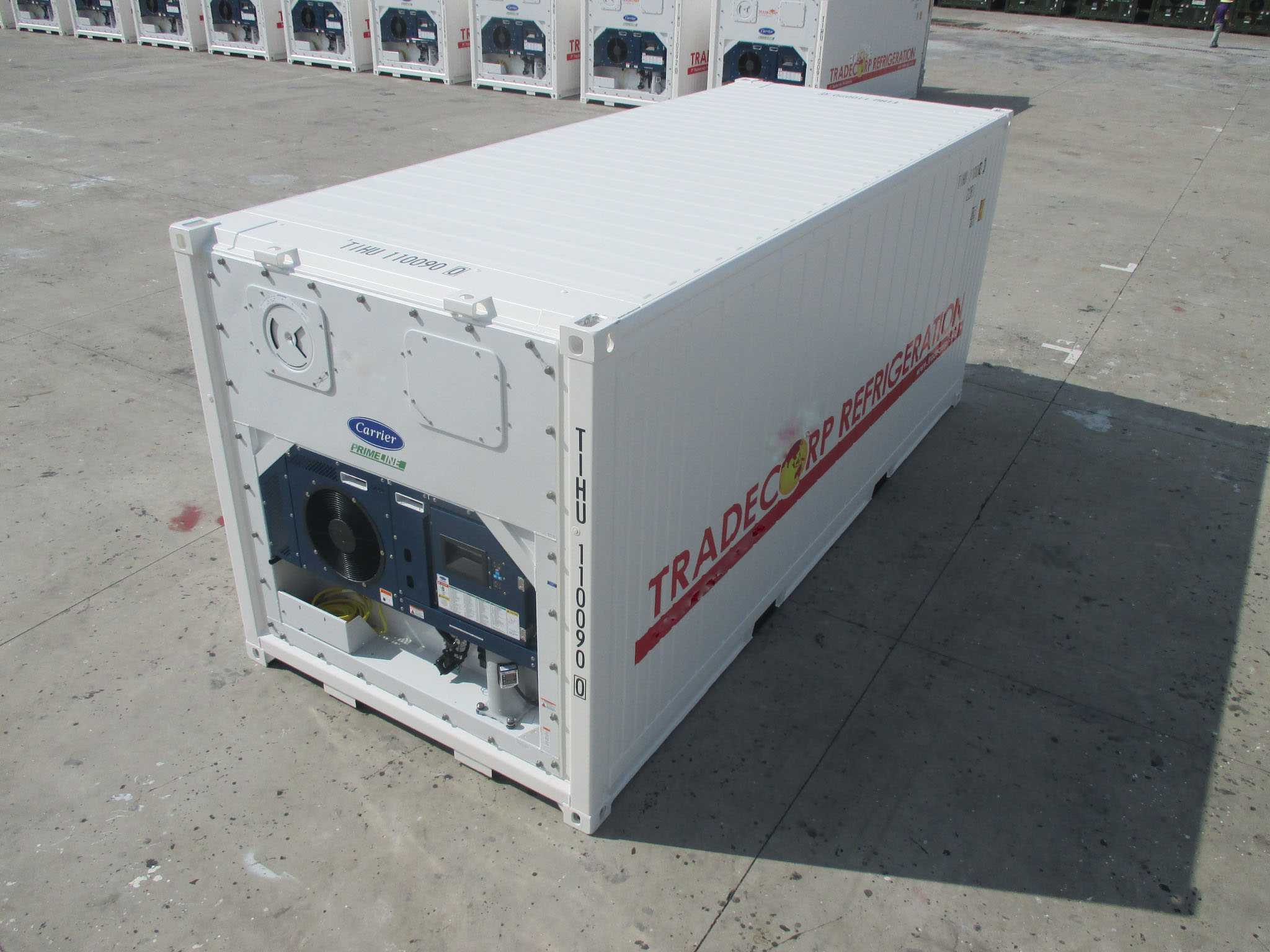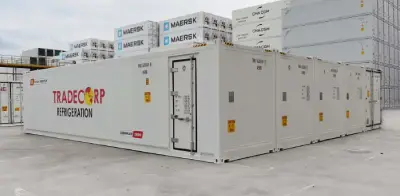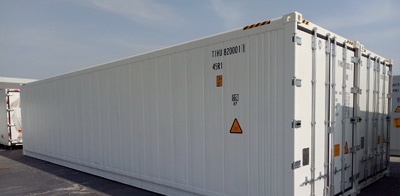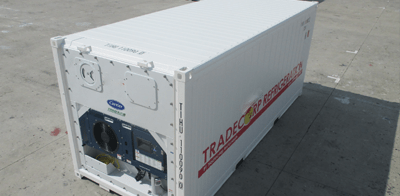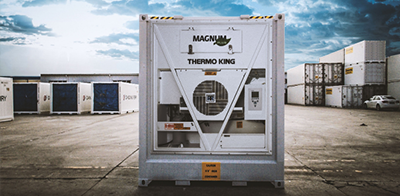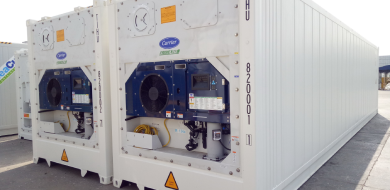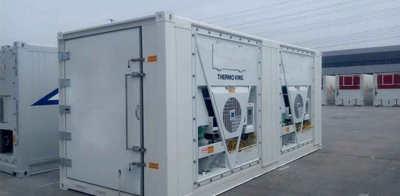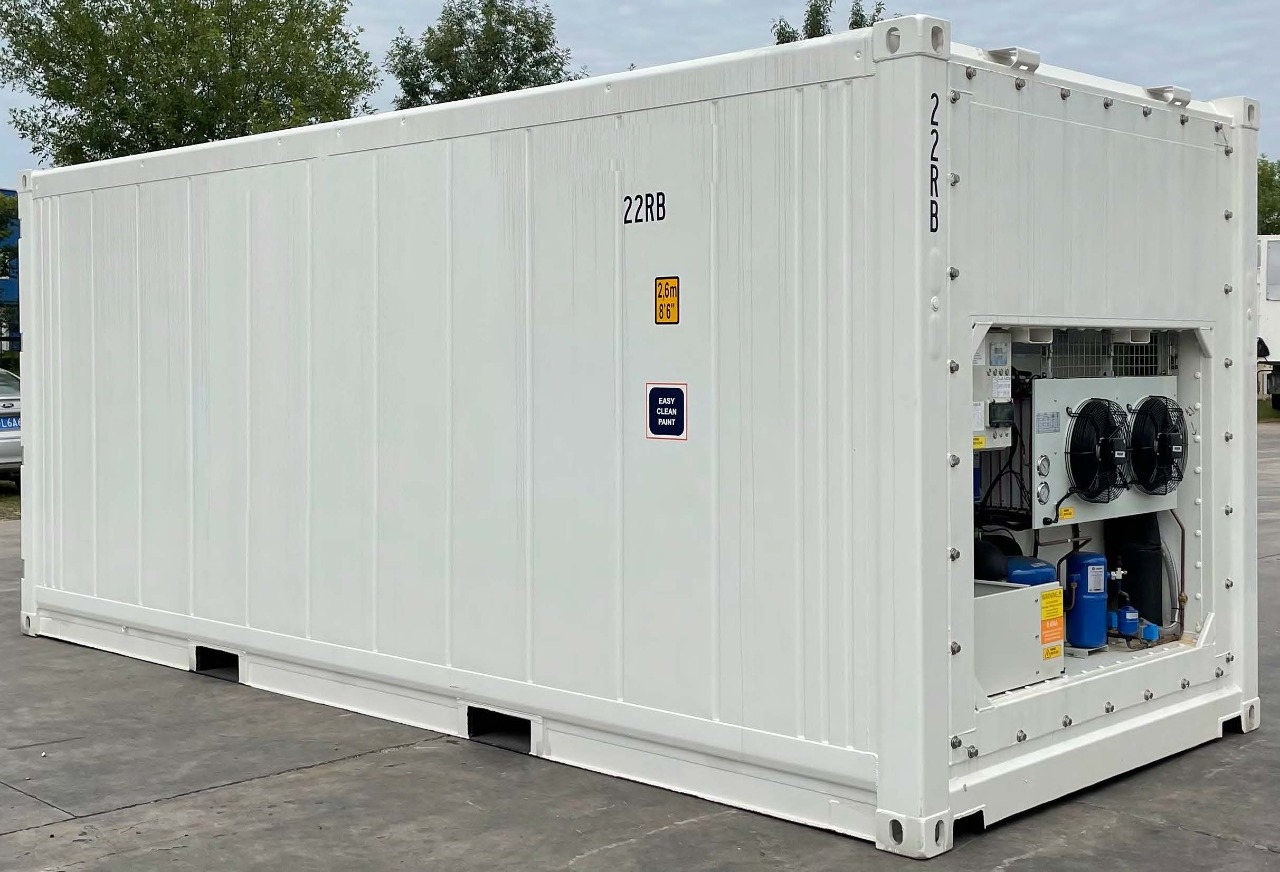Single Phase
Refrigerated Container
Single Phase Refrigerated Container is suitable in a circumstance in which a three-phase power source is unavailable, making it a reliable choice in inconvenient conditions.

Single Phase Refrigerated Container for On-site and Off-site Storing
Power efficient
Single-phase refrigerated containers require a lower power supply of a 15 amp 240v power supply compared to 3-phase containers which require a 32 amp power supply. This is what makes Single-phase refrigerated containers more power efficient because they can save up to 60% energy.
Usually, single Phase Refrigerated containers are widely used in residential complexes and they are also often used for coolroom storage. This refrigerated type is also equipped with features that are usually found in standard refrigerated containers such as internal lighting, emergency release doors, a T-Bar floor, and an air cooling machine.
Broad temperature reach
Single Phase refrigerated containers have a temperature reach of -40C to 20C (-40F to 68F) and an ambient temp of -29C to 48C (-20F to 118F). Given the temperature reach, this type of refrigerated container can store items longer without compromising their quality. In addition, this type of container is available in two types, namely 20′ and 40′ with varying options of add-ons to meet the customers’ needs.
20’ Single-Phase Refrigerated Container is designed with 20’ long (6 m), 8’ wide (2,4 m), and 8.6’ (2,6 m) tall, allowing this unit to transport payload in delicate amounts. This type of refrigerated container maintains a controlled temperature in long-distance shipping, preserving the transported goods in its initial phase.
40’ Refrigerated Container is designed with 40’ long (12 m), 8’ wide (2,4 m), and 8.6’ (2,6 m) tall, the configuration allowing it to preserve the payload’s qualities intact in large quantities.
Established features
Single-Phase refrigerated containers are designed with two types of floor design: flat floor and t-bar floor that are responsible for maintaining air exchange inside the refrigerated container in order to produce an intended temperature and humidity and it has one locking bar on each door for easy access as its basic fitting features.
Maintaining proper drainage in refrigerated containers is critical to releasing water residue in refrigerated containers, thus it is equipped with the type of floors to keep a consistent flow of chilled air produced by the condenser and compressor.
It is also equipped with inferior fans, a control unit, a fresh air vent, a unit evaporator, and a condenser. Basically, single-phase refrigerated containers have the same functions as other types of refrigerated containers, including the features that complement them. Given these established features make this Single Phase Refrigerated Container reliable even in unexpected conditions.
Each Single-Phase refrigerated container will be integrated with a cooling machine which will require a power source to function properly. With well-engineered features in it, this product is able to maintain product quality during the shipping and storage process for a long time.
Single Phase Refrigerated Container functions as most refrigerated containers. It is used to store and transfer perishable goods. It is manufactured in compliance with the International Organization for Standardization (ISO) standards. Thus, it is reliable for both on-site and transported storage for temperature-sensitive goods to prevent them from quality decline.
- Interior fans: Interior fans help maintain and circulate adequate airflow to ensure temperature control.
- Control unit: Set the cooling parameters such as temperature, humidity, and ventilation with the control unit.
- Fresh air vent: Atmospheric air from outside enters through this vent while harmful fruit-ripening gases, such as ethylene, leave from this duct.
- Unit evaporator: The evaporator unit heats or cools the circulating air inside the container to drain excess moisture.
Condenser: There are two types of commonly used condensers in reefers: Air cooling and water cooling. The Air-cooled condenser section helps pull cool air from the top of the container and discharges it under the cargo.

